Can Tho is located in the heart of the Mekong River Delta, in an intricate network of rivers, brooks, canals, and ditches that serve as the primary mode of transportation for many areas of the province. These waterways also have coconut and palm tree-shaded banks, delicate “monkey bridges,” and a plethora of intriguing floating villages and markets for eco-tourism development. Let’s check out the essential information on Can Tho travel guide if you are planning a trip to this peaceful city of Vietnam.
General Information
Can Tho is located in southern Vietnam’s Mekong Delta region, 169 kilometers (105 miles) from Ho Chi Minh City. This is a unique city in the Mekong Delta, famous for its rice harvest output of 1000 tons per year, along with other provinces. Can Tho, on the south bank of the Hau river, is known as a buzzing town with a lively waterfront lined with sculpted gardens, a beautiful combination of narrow backstreets and wide avenues, and perhaps the largest gathering of foreigners in the delta. It is also a good idea for floating markets with a lot of activity. Tourists are also drawn to the ancient houses, orchards full of delicious tropical fruits, and charming traditional music. A boat tour along the various sites will not disappoint any visitors on a Northern Vietnam tour.
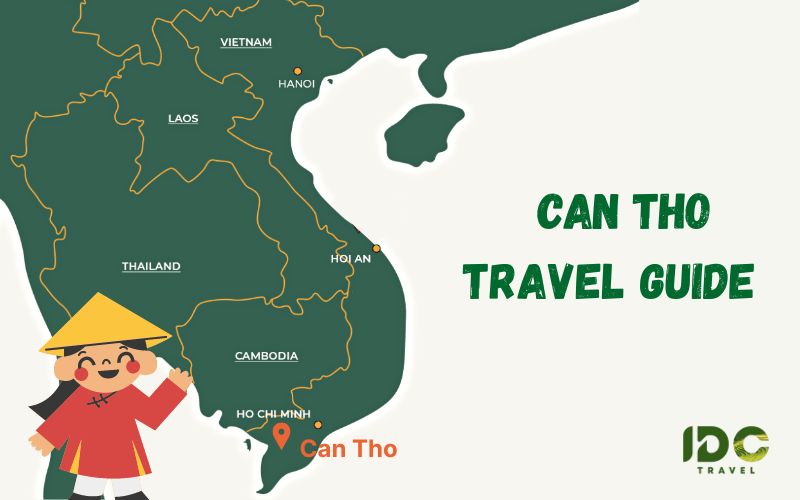
Can Tho location
Can Tho is the largest city in the region, covering an area of 1,409 square kilometers and being home to 1,214,100 people as of 2012, and feels like the ‘western capital’ after a few days exploring the backwaters. It is bordered by An Giang province to the north, Dong Thap province to the east, Kien Giang province to the west and Hau Giang province to the south. Can Tho is divided into nine districts: Ninh Kieu, Binh Thuy, Cai Rang, O Mon, Thot Not, Phong Dien, Co Do, Vinh Thanh, and Thoi Lai. Some ethnic groups, such as the Vietnamese, Chinese, and Khmer, call the city home.
Can Tho is the Mekong Delta’s political, economic, cultural, and transportation hub. It is also the largest city in the region, and it is linked to the majority of the other population centers in the Mekong Delta by a network of rivers and canals. These waterways, as well as the colorful Cai Rang Floating Market, pique the interest of visitors to Vietnam.
Can Tho was once known as Tay Do (Capital of the Western Provinces), and it is still known as the “rice basket” of southwestern Vietnam. The province is known for its abundant fruit orchards, freshwater aquaculture, and lush, quintessentially Vietnamese rural scenery, in addition to being a major rice producer.
Can Tho Weather & Best time to visit
The weather in Can Tho is divided into two seasons: the dry season and the rainy season. Can Tho climate is characterized by low humidity and rainfall during the dry seasons, with temperatures ranging from 23 to 30 degrees Celsius. Beginning in May, the rainfall level in Can Tho changes during the rainy season.
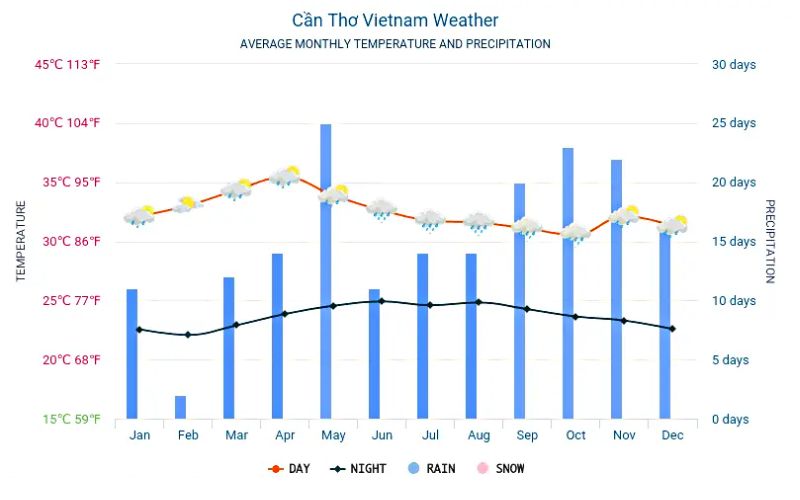
Can Tho Weather & Best time to visit
Can Tho is best visited from January to March in the summer or from April to June in the monsoon. The mild climate is ideal for outdoor activities and exploration.
How to get to Can Tho
Between Saigon and Can Tho, there is no train service. Although there is an international airport, there are no direct flights from Ho Chi Minh City to Can Tho. All flights will have layovers at a connecting airport, some of which may be quite short. A flight is still the quickest way to travel between the cities, with some flights taking as little as two hours and fifteen minutes.
Many shuttle and bus services are available for those who want to get to Can Tho as quickly as possible without stopping for too long along the way. There are several bus departures per day from Ho Chi Minh City’s Mien Tay bus station to Can Tho, with one rest stop along the way. Bus service is also the most cost-effective option. The Mekong Region is served by two major bus companies: Phuong Trang and Thanh Buoi. One-way tickets cost 110,000 dong (about $5.50).
Independent shuttle services may also pick up passengers at their hotels and provide a slightly more comfortable experience. Shuttles are an excellent choice for larger groups that would fill a shuttle or van and prefer the convenience of traveling together and departing directly from their Ho Chi Minh City accommodations.
A private car may be the best option for those who want to stop at points of interest along the way from Ho Chi Minh City to Can Tho and control their departure time completely.
Where to stay in Can Tho
There are many popular hotels in Can Tho to choose from, whether you’re traveling for business or pleasure. Popular places to stay include TTC Hotel Premium Can Tho, Tulip Hotel Can Tho, and Con Khuong Riverside Resort Can Tho. A 3-star hotel in Can Tho costs, on average, $28 per night. A 4-star hotel in Can Tho will cost around $65 tonight, while a 5-star hotel will cost around $140.
What to See in Can Tho
The most interesting thing to do in Can Tho is taking a canal boat ride and visit the Cai Rang Floating Market. Outside of town is the Thot Not stork garden, where hundreds of egrets, herons, and cormorants roost in the treetops late in the afternoon. Can Tho is frequently combined with a visit to Chau Doc, a small town near the Cambodian border.
Cai Rang Floating Market
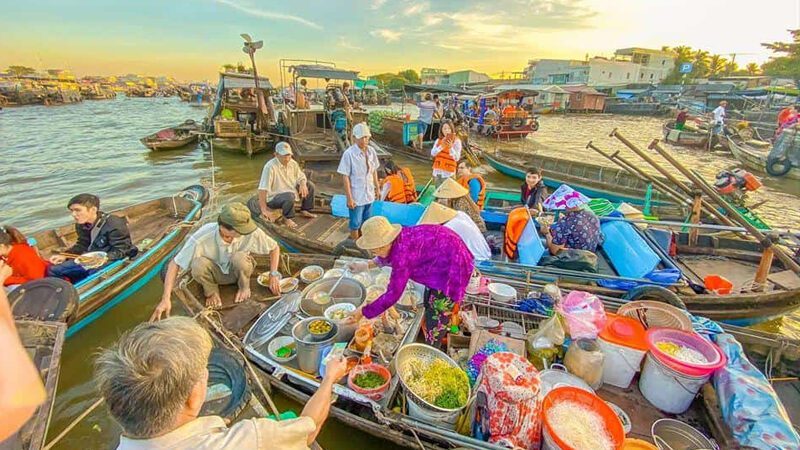
Gordon Ramsay at Cai Rang floating market
The market is the largest wholesale floating market near Can Tho, with hundreds of boats carrying a wide variety of goods exchanging goods throughout the area every day. The boats are overflowing with fresh fruits and vegetables. Colors from fruits, vegetables, traders, and tourists combine to form a large, stunning painting across the green murky waters. To participate in the market, tourists should arrive early in the morning (as early as 5:30 a.m.) and return 3-4 hours later via the small tributaries to the Can Tho river.
Make a reservation for a small boat at Ninh Kieu pier or through local tour agents to travel through the small canals that the larger boats cannot navigate. Prices are negotiable and vary according to the length of the Mekong Delta daily tours.
Tay Do Night Market
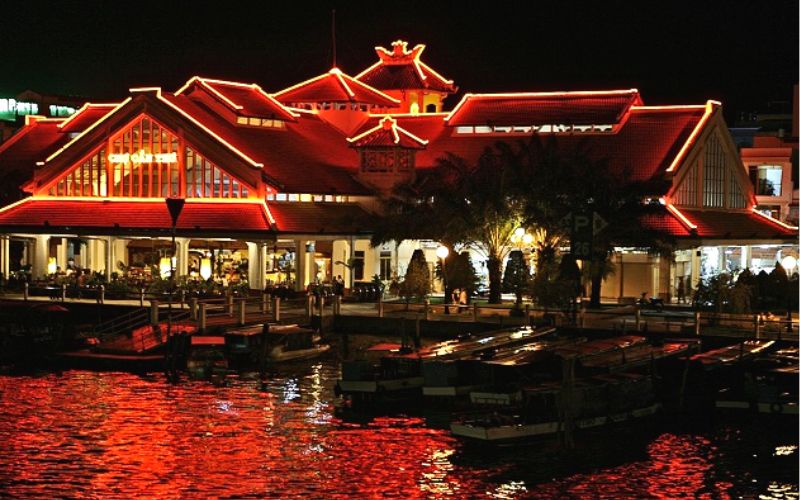
Tay Do Night Market
Tourists will see Tay Do Market 1km west of Can Tho City, which is not only a trading place for Southern provinces but also a cultural tourist destination feature, highlight, and attraction in Can Tho. The architecture of the market is distinctively Southern in style and blends in with the surrounding landscape. The market has many booths, and the spacious cemented paths in the middle create an airy and artistic space. When visiting here, tourists have a wide range of purchasing options.
Ninh Kieu Park
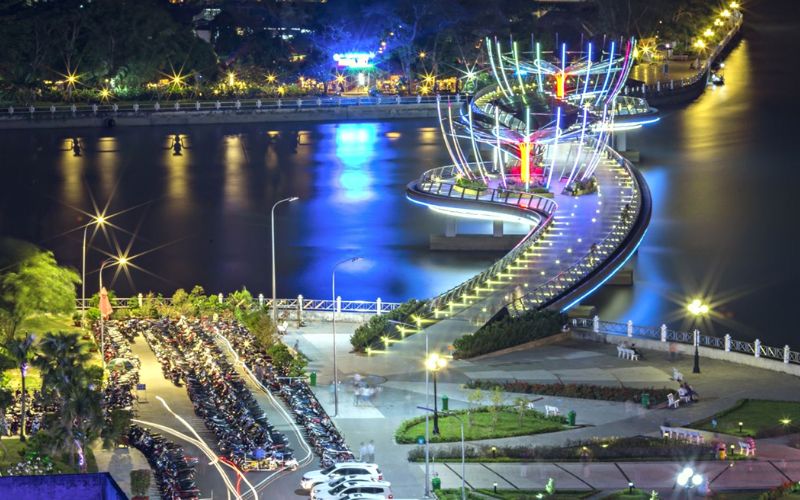
Ninh Kieu Park at night
This is a port and a popular tourist destination in Can Tho City that was built in the 19th century and is known for its beautiful poetic landscape and exciting atmosphere. For many years, this park has served as an inspiration to many poets as well as a magnet that draws a large number of tourists each year.
Can Tho Fruit Garden Tour
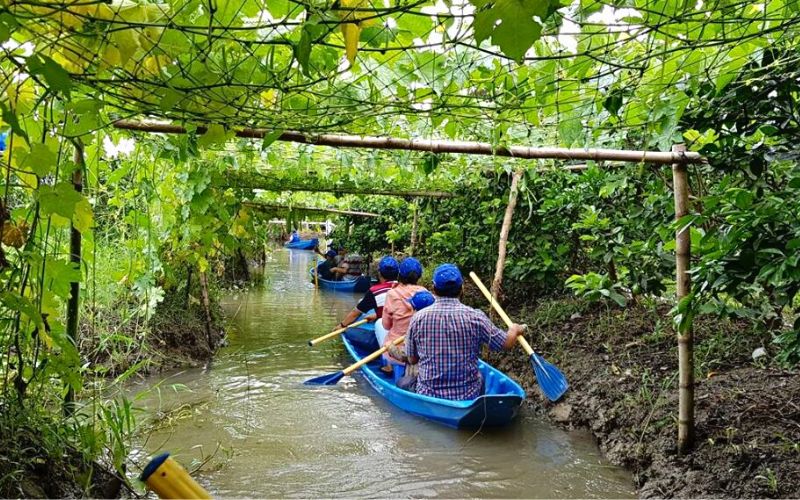
Fruit Garden Tour
Can Tho, like other Western provinces, attracts tourists due to its abundance of orchards. When visiting orchards in Vietnam, tourists not only get to see a diverse collection of fruit trees, flowers, and various species of birds, fishes, and so on, but they also get to try these local specialties. In recent years, more and more modern tourism gardens, such as My Khanh Ecotourism, Garden of Mr. Duong, Bich Thuy orchid garden, garden arch on the rivers Phong Dien, Phung Hiep, and many other family tours in O Mon and Thot Not, have appeared on every land and water route.
Cacao Farm
Agriculture is well-known in the Mekong Delta. Visit Mien Tay Homestay, which is both a homestay and a small cacao farm run by Lam The Cuong and his family. For just over a dollar, you can take a short tour of the farm and learn how cacao tree fruit is transformed into familiar cacao products like body butter, liquor, and, of course, chocolate. If you want to stay at the homestay, it costs around USD$15.00 (VND$300,000) per night, which includes two meals and a pick-up.
Bang Lang Stork Sanctuary
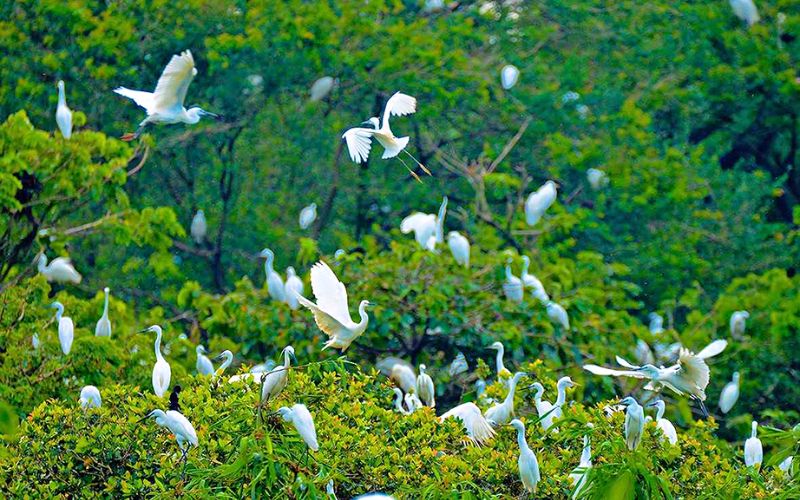
Bang Lang Stork Sanctuary
Pay a visit to the Bang Lang stork sanctuary; tourists will have the opportunity to discover one of the most appealing tourist destinations in the Mekong Delta, with thousands of storks returning home in the late afternoon after a long day of searching for food elsewhere. The sanctuary, which is located in the Thot Not district, is home to over 300,000 storks of nearly 20 different species. Because storks are sensitive to strangers, you can observe them from a distance or from a bird’s eye view.
Pagodas and Temples
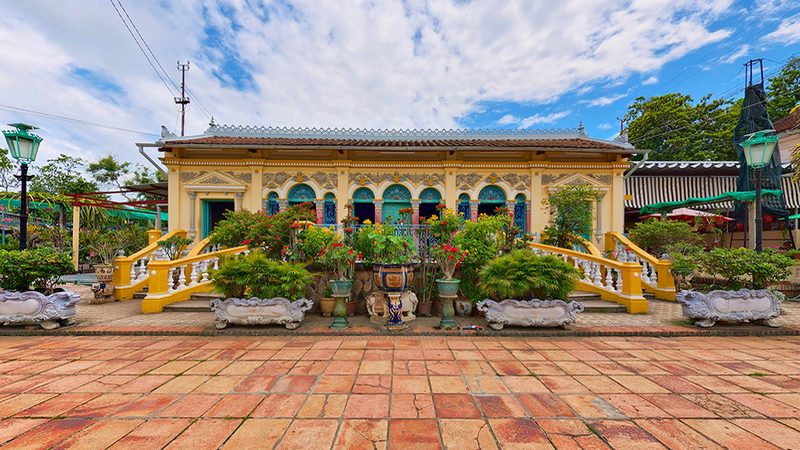
Binh Thuy Old House
Can Tho is home to numerous historical and beautiful pagodas and temples.
- Binh Thuy Old House is located on Bui Huu Nghia Street in the Binh Thuy Ward of the Binh Thuy District.
- Hai Ba Trung Street, Tan An Ward, Ninh Kieu district, Ong Pagoda
- 612 Cach Mang Thang 8, An Thoi Ward, Binh Thuy District, Nam Nha Pagoda
- Pitu Khosa Rangsey Khmer Pagoda is located at 27/2 Truong Dinh Street in the Ninh Kieu District.
Phuong Nam Zen Monastery
Phng Nam Zen Monastery is 300m from My Khanh Tourist Village in My Khanh Commune, Phong Dien District. On July 16, 2013, construction on the Temple began on an area of 38,016m2. Truc Lam Chanh Giac Zen Monastery is built in a traditional architectural style, with a curved roof and red tile. The ancient pagodas in Vietnam, on the other hand, are taller and more comfortable.
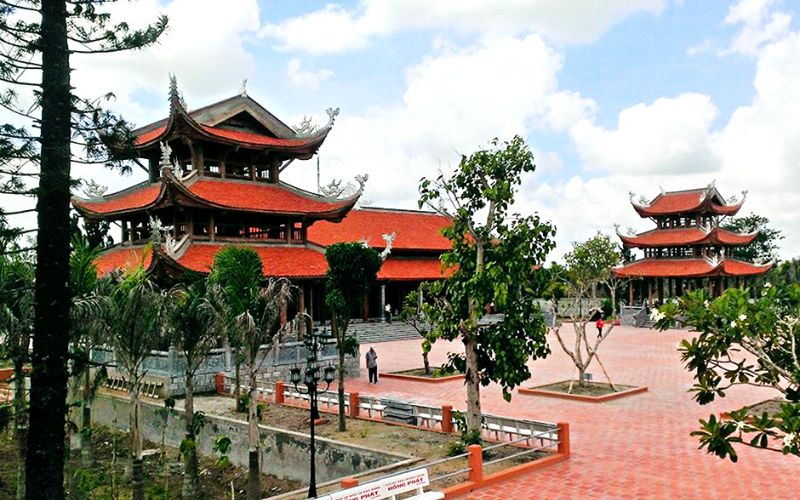
Phuong Nam Zen Monastery
The method of worship is also simpler and more focused on meaning; for example, the Main Buddha only worships the statues of Shakyamuni, Manjushri, and Samantabhadra. The Zen monastery has a large campus, the landscape is fresh and cool, and the bell sound is heard far and wide. This is a destination for those looking for mental peace.
Museum of Tarot
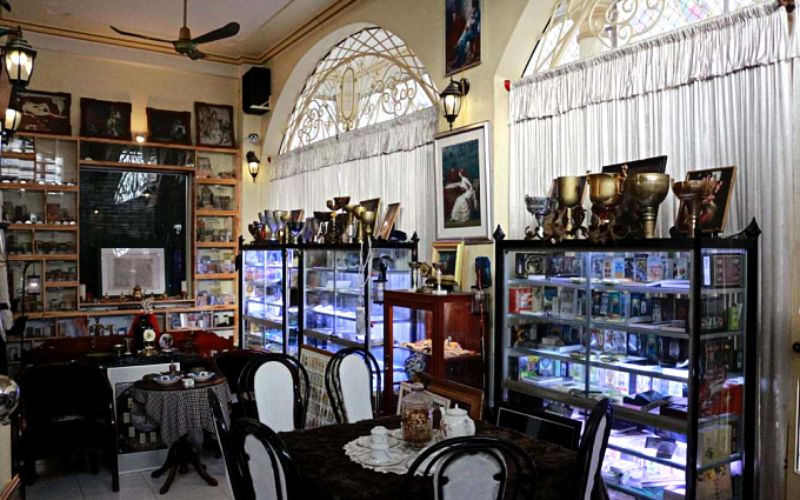
Museum of Tarot
The Museum of Tarot (also known as the Museum of Tarot and Oracle, or officially the Museum of Tarot and Occult) was founded in 2016 in Can Tho City, Vietnam’s southernmost city. The museum is divided into three sections: Tarology, Cartomancy, and Occult. The museum houses a wide range of objects dating from the 15th to the 21st centuries. The museum is housed in an ancient noble hotel known as “the citron house,” which was built in the Vietnamese Renaissance style.
Can Tho Prison
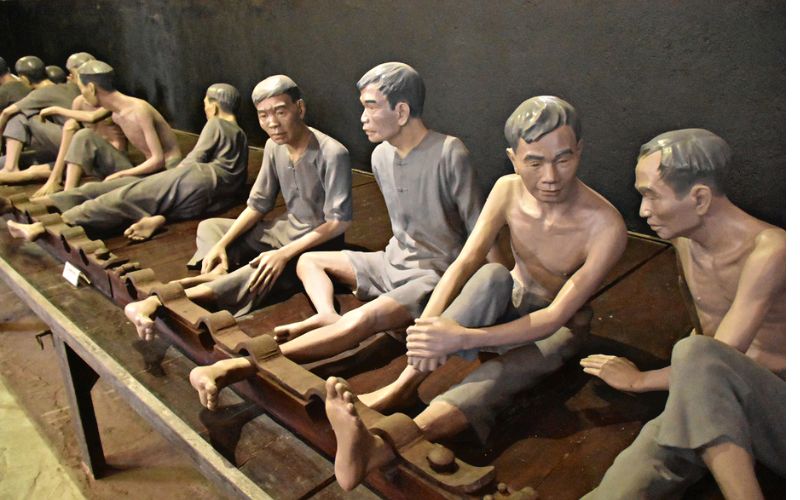
Can Tho Prison
Can Tho Prison is a significant historical site in the city. Vietnamese dissidents and revolutionaries were imprisoned, tortured, and executed within the walls. It was built by the French during the colonial era but was later used by South Vietnamese and Americans during the Vietnam War. The prison has 21 detention rooms, a church, a pagoda, a supervisor’s house, and a kitchen. The mannequins depict various scenes from the prison’s history, and they are quite disturbing.
Travel tips
Bring a camera, a hat, sunscreen, and insect repellant with you. When not in use, keep your camera in a plastic bag because it is easily splashed by the wake of motorized boats.
What to Eat in Can Tho
Banh xeo (Vietnamese Pancake)
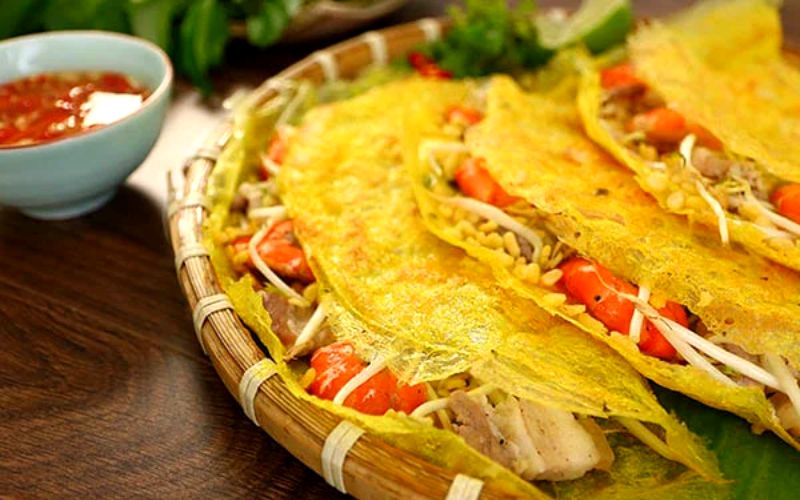
Banh xeo – Vietnamese pancake
This is a popular Can Tho food street that can be found anywhere, from street stalls to luxurious restaurants. The word xeo refers to the sizzling sound made when pouring rice batter into a hot skillet. A yellow outer layer of the cake contains boiled pork strips, shrimp, bean sprouts, and spring onion. To eat it, first cut the cakes into small pieces, then take a piece of it and tightly roll it into a rice paper with the served vegetables, then dip the roll into the sauce and taste it. It is strongly advised to use your hands rather than chopsticks for the best flavor.
Chuoi Nep Nuong (Baked Sticky Rice Banana Bun)
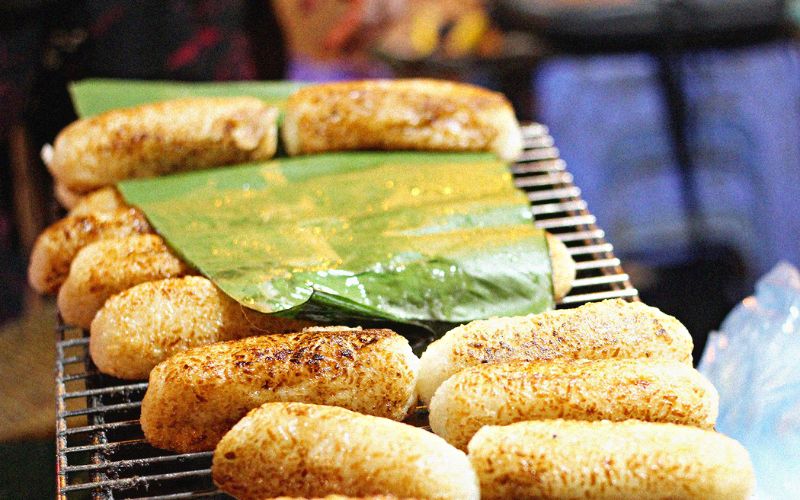
Chuoi Nep Nuong
Banana buns in Can Tho are small and sweet, making them an ideal snack or dessert. Bananas are encased in a layer of glutinous sticky rice cooked in coconut milk. A banana leaf is wrapped around the center of the banana and rice package before being grilled..
Banh tam bi (Vietnamese Noodles in Coconut Cream)
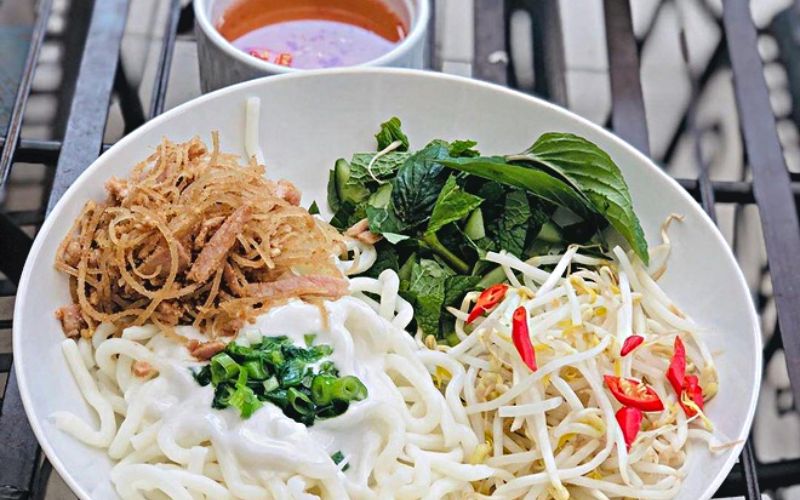
Banh tam bi
This dish consists of thick rice and tapioca noodles tossed with herbs and pork and drenched in a thick coconut cream dressing. This food flavor will not be available anywhere else because it is unique and special.
Fried salty rock crab
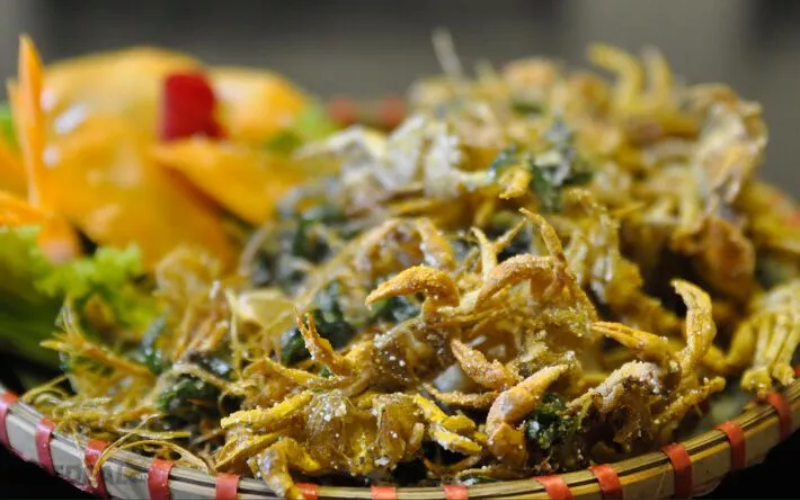
Fried crab
You should drive 10 minutes by motorcycle to Dinh Tien Hoang Street near Hung Vuong Bus Station to try the best rock crab ever. The rock crab is the size of an expanding adult hand, with purple shells and pincers and a shape similar to the paddy field crab. The crab is called rock because it usually lives in a rocky area, reef of the island, or rock cliff on the South coast. Their meat is white, soft, and sweet, making it ideal for the salt-and-pepper lemon mixture.
We hope the above article has been helpful in providing you with information about Can Tho. Don’t hesitate to contact us and plan your Can Tho tours right now!
